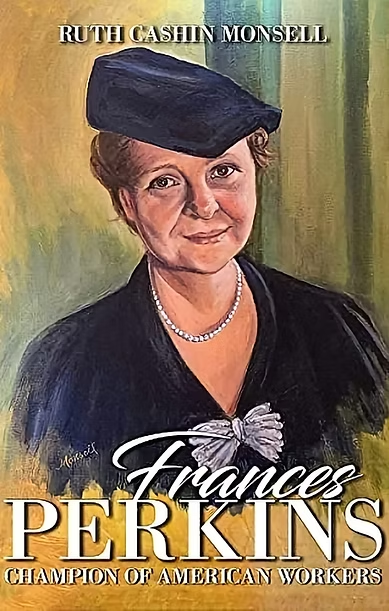
Introduction
Imagine living in a time when workers faced grueling conditions, often toiling without safety nets or basic rights. Who would step up to fight for them? Frances Perkins did just that. Known as the first woman to serve in a U.S. presidential cabinet, she became a trailblazer for social justice and an architect of the New Deal. Her tireless advocacy reshaped the American workplace and gave millions a fair shot at a better life.
Who Was Frances Perkins?
Frances Perkins was more than just a name in history books; she was a pioneer who dedicated her life to fighting for workers’ rights. Born on April 10, 1880, in Boston, she became the U.S. Secretary of Labor under President Franklin D. Roosevelt. Her work wasn’t just about policies; it was about people—the factory workers, the unemployed, and the families struggling to make ends meet.
Early Life and Influences
Family and Education
Frances grew up in Worcester, Massachusetts, in a supportive family that valued education. She attended Mount Holyoke College, where her passion for social reform began. Influenced by her professors, she developed a deep understanding of economics and sociology, subjects that would shape her career.
The Seeds of Activism
A visit to Chicago’s Hull House introduced her to the harsh realities of industrial life. Witnessing poverty and exploitation firsthand ignited a fire in her to create change.
A Turning Point: The Triangle Shirtwaist Factory Fire
Sometimes, a single event can change a person’s life. For Frances, it was the 1911 Triangle Shirtwaist Factory fire in New York City. The tragedy, which claimed 146 lives, many of them young women, shocked the nation.
Frances stood among the onlookers, horrified. This moment became her call to action. She vowed to dedicate her life to ensuring such a disaster would never happen again.
Climbing the Ladder: Early Career Highlights
Fighting for Workplace Safety
After the fire, Frances joined the Factory Investigating Commission, advocating for safer working conditions. Her efforts led to significant reforms in workplace safety laws.
Progress in New York Politics
As the first woman to head the New York State Industrial Commission, she gained valuable experience in policy-making and labor rights advocacy.
Breaking Barriers: The First Female Cabinet Member
When Franklin D. Roosevelt invited Frances to join his cabinet in 1933, she hesitated. Why? She knew the challenges of being the first woman in such a high-profile position. But she accepted the role, becoming the Secretary of Labor and making history.
Her tenure wasn’t about personal accolades; it was about delivering results. Frances worked tirelessly to bring her vision of social justice to life.
Frances Perkins and the New Deal
What Was the New Deal?
The New Deal was a series of programs and reforms launched during the Great Depression. It aimed to provide relief, recovery, and reform to a struggling nation.
Frances’ Role in the New Deal
Frances played a pivotal role in shaping these initiatives, particularly those focused on workers’ rights and economic stability.
Social Security: A Landmark Achievement
Imagine growing older without any safety net. Thanks to Frances, the Social Security Act of 1935 changed that. This groundbreaking legislation provided pensions for retirees, unemployment insurance, and support for the disabled and disadvantaged.
Frances often referred to Social Security as her proudest accomplishment. And rightly so—it transformed the lives of millions.
Workers’ Rights: The Backbone of Her Work
Fair Labor Standards Act
Frances championed the Fair Labor Standards Act of 1938, which introduced the minimum wage, established the 40-hour workweek, and banned child labor.
A Vision for Equality
Her work wasn’t just about laws; it was about leveling the playing field and giving workers dignity and respect.
Overcoming Challenges and Critics
Being a trailblazer isn’t easy. Frances faced significant resistance, not only because of her gender but also her progressive ideas. Critics questioned her policies, and some even launched personal attacks.
Yet, Frances remained steadfast, believing that the welfare of the people was worth the fight.
Her Legacy Beyond Politics
Frances Perkins’ impact extends far beyond her tenure as Secretary of Labor. Her work laid the foundation for modern labor laws and social welfare programs. She proved that compassionate governance could create lasting change.
Honoring Frances Perkins Today
The Frances Perkins Center
Located in Maine, the Frances Perkins Center preserves her legacy and educates future generations about her contributions.
Recognition and Awards
From schools named after her to posthumous honors, Frances continues to be celebrated as a champion of social justice.
How Frances Perkins Inspires Modern Advocates
Frances’ story reminds us that one person can make a difference. Her dedication to social justice inspires activists, policymakers, and everyday citizens to fight for fairness and equity.
Frequently Asked Questions
1. What was Frances Perkins’ greatest achievement?
Her greatest achievement was the Social Security Act of 1935, which provided a safety net for millions of Americans.
2. How did Frances Perkins become the first female cabinet member?
President Franklin D. Roosevelt appointed her as Secretary of Labor in 1933 due to her expertise in labor policy and social welfare.
3. What inspired Frances Perkins to focus on workers’ rights?
The Triangle Shirtwaist Factory fire in 1911 deeply impacted her and inspired her lifelong commitment to workplace safety and labor reforms.
4. What challenges did Frances Perkins face in her career?
She faced gender discrimination, criticism for her progressive ideas, and resistance from political opponents.
5. Why is Frances Perkins considered a champion of social justice?
Her efforts in creating labor laws, Social Security, and workers’ rights reforms transformed the American workplace and improved countless lives.

